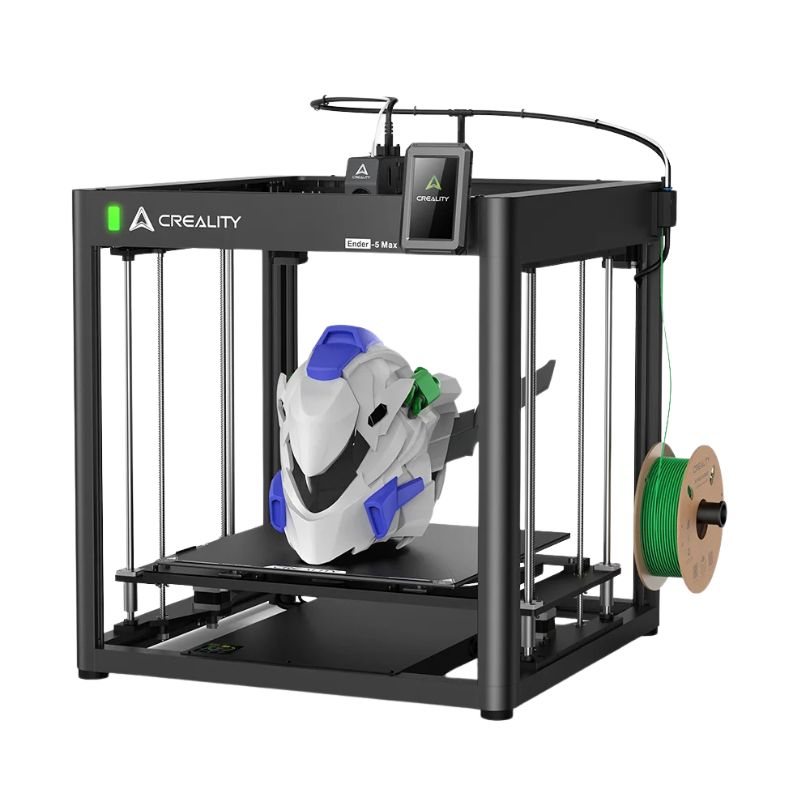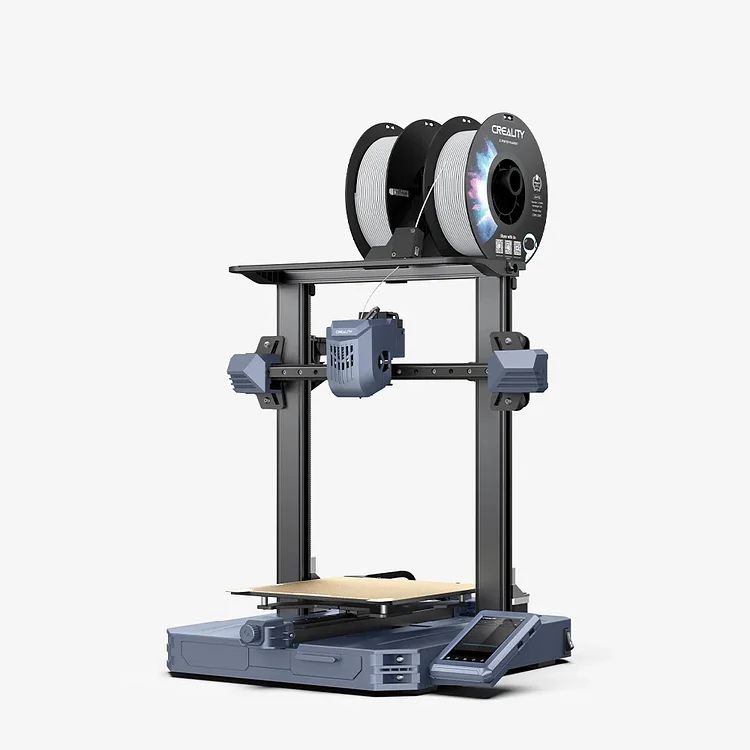Compare Ender 5 Max vs CR10 SE
Comparison between the best 3D printers
Choose the best 3D printer at the best price. The cheapest 3D printers are here.
Buy a 3D printer here with 3D Fila.
 |
 |
|
| Model | Ender 5 Max |
CR10 SE |
| Printing Material | Filament | Filament |
| Buy Filament for Creality Ender 5 Max | Buy Filament forCreality CR10 SE | |
| Estimated price | $769,00 | $386,00 |
| Manufacturer | Creality | Creality |
| Release Year | 2025 | 2023 |
| Print Volume [mm] | 400x400x400 | 220x220x265 |
| Printer Size [mm] | 649x721x850 | 490x470x625 |
| Weight [kg] | 25,9 | 6,9 |
| Power Loss Recovery | YES | NO |
| Enclosed printer | NO | NO |
| Bed Leveling | Automatic | |
| Filament End Sensor | YES | NO |
| Bed type | Heated | |
| Power supply system | Direct Drive | Direct Drive |
| Standard nozzle | 0,4 | 0,4 |
| Maximum Nozzle Temperature [°C] | 300 | 300 |
| Maximum Bed Temperature [°C] | 100 | 110 |
| Maximum printing speed [mm/s] | 700 | 600 |
| Filament holder | YES | YES |
| Camera for supervision | YES | YES |
| Recommended filaments | Hyper PLA/PLA/PETG/TPU95A/ABS/ASA/PLA-CF/PA/PLA-Silk | PLA, PETG, PET, TPU, PA Wood, ABS, ASA, PA, PLA-CF |
| Recommended slicers | Creality Print 5.1 | Creality Print, Cura, Simplify3D, PrusaSlicer, Orca Slice |
| Maximum Resolution [mm] | 0,1 | 0,1 |
| Processor | ||
| Display | Touchscreen 4,3'' | |
| Power Supply | 1250 W | |
| Connectivity | USB, Wifi | USB, Wifi |
| Operating systems | Windows | Windows, Linux, Macbook |
| Date of registration in the system | 2025-02-18 | 2024-07-02 |
| Release date | 2025 | 2023 |
| Extra features | The Ender 5 Max by Creality features a 400 x 400 x 400 mm build volume, a rigid aluminum frame, and 36-point auto bed leveling. With speeds up to 700 mm/s, it boasts a hardened dual-gear extruder and a 1000W heated bed, reaching 80°C in just 200 seconds. It supports remote management via WLAN, a tri-color status indicator, and quiet operation, making it ideal for high-precision, high-productivity 3D printing. | The Creality CR10 SE stands out for its printing speed of up to 600 mm/s, easy and intuitive assembly, direct extruder with double gears, hotend with hardened steel nozzle and ceramic heater, automatic leveling with CR-Touch and pressure sensor, and use of Creality OS firmware based on Klipper, with automatic input shaping calibration. It also includes Wi-Fi connectivity, a filament out-of-stock sensor and a robust structure with linear rails on the X and Y axes. |
| Support for multiple colors and materials (AMS and CFS) | NO | NO |
Notes * |
||
| Cost-benefit | 7 / 10 | 7 / 10 |
| Hardware | 5 / 10 | 2.4 / 10 |
| Tela | . | . |
| Print volume | 4 / 10 | 3 / 10 |
| Performance | 6 / 10 | 5 / 10 |
Conclusion |
| In comparing the Creality Ender 5 Max and the CR10 SE, several factors highlight key differences that potential buyers should consider. The Ender 5 Max, being the more expensive option, offers a significantly larger print volume and higher maximum printing speed, making it suitable for users who require larger models or enhanced productivity. It also features automatic bed leveling, a filament end sensor, and power loss recovery, which collectively enhance its usability and reliability during long prints. These features, coupled with its robust build quality, position it as a strong choice for professional or serious hobbyist 3D printing applications. Conversely, the CR10 SE, while more budget-friendly, provides adequate functionality for most basic printing needs. Although it has a smaller print volume and lacks some of the advanced features of the Ender 5 Max, its ease of assembly and straightforward operation might appeal to beginners. The CR10 SE is compatible with various operating systems and offers good versatility in terms of the filaments it can accommodate. Ultimately, the choice between these two printers will hinge on individual requirements. Those with advanced printing needs and a higher budget may find the Ender 5 Max to be the better investment, whereas users new to 3D printing or those focused on smaller projects might benefit from the lower-cost option represented by the CR10 SE. Each printer offers a solid cost-benefit ratio within its respective target market, ensuring both models meet the demands of diverse 3D printing applications. |

